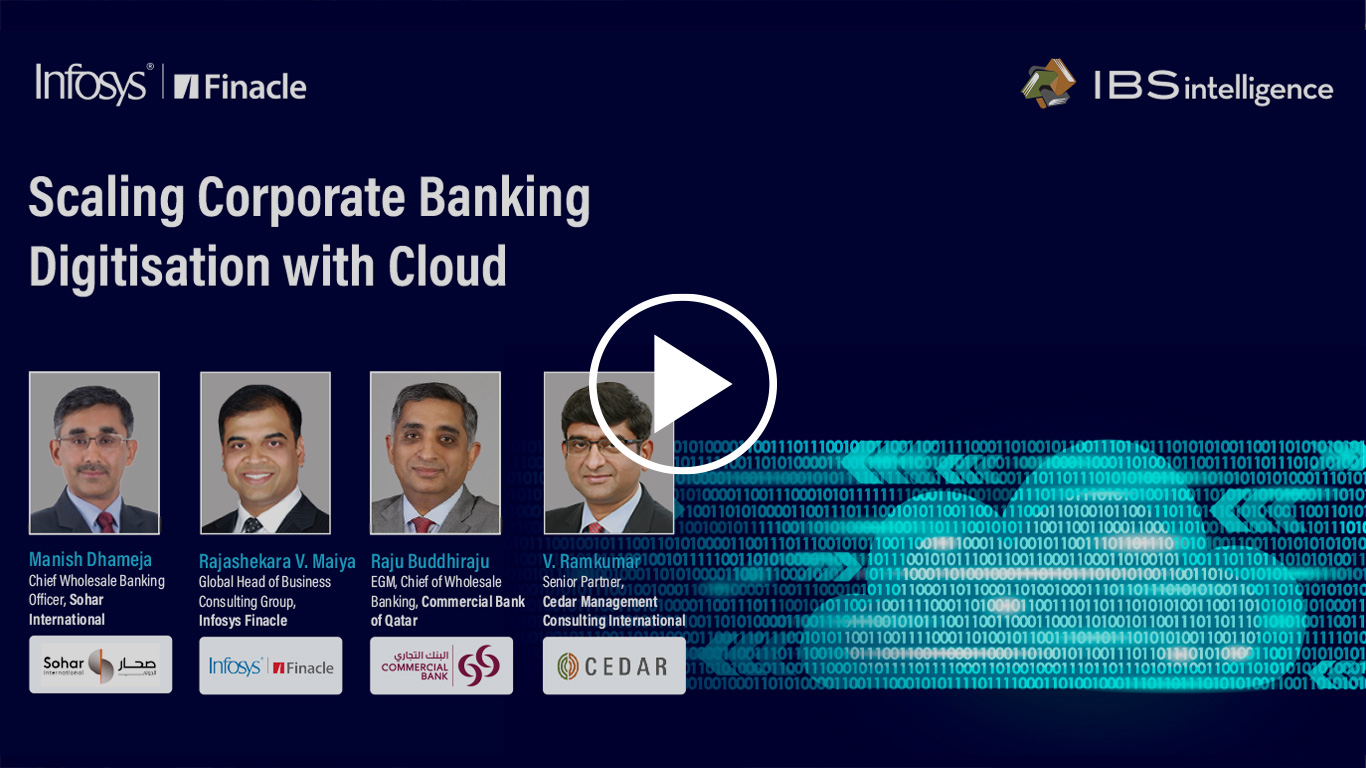Serving Corporate Customers Begins with Treasury
Four ways in which banks can support their corporate customers embrace digital transformation in their treasury operations.
By Rahul Wadhavkar, Head of Product Management – Commercial Banking Products, Infosys Finacle

The treasury is a significant source of value for a corporate. Hence any plan aimed at serving corporate customers better must necessarily factor improving the efficiency of treasury operations and transforming that from a cost center to a value center.
By and large, the corporate treasury function tends to trail most areas on the digital journey vis-à-vis other functions. Hence there is considerable scope for transformation. For banks keen on lending support to corporate customers, digitization of treasury operations is a good place to start.
Broadly, they can help their clients with the following:
- Make the difficult transition to adopting the latest technology across the treasury business
- Build a digital treasury that can interact seamlessly with the banks’ environment for efficient operations
- Go from a “data approach” to an “information approach”
- Improve risk management
Adopting the latest technology across the treasury business
Even today, a staggering number of businesses use Excel as their primary treasury management tool. A financial services industry analyst firm reported that 51 percent of companies earning annual revenues of less than US$ 250 million primarily (or exclusively) used spreadsheets for managing treasury operations1. This is inadvisable for several reasons: it takes a huge amount of effort and time to gather and manipulate data in a spreadsheet, which gets worse as the number of banks and bank accounts increases; there’s a greater risk of errors due to “fat finger” typing, breakdown of macros and formulas, or simply, manual oversight; last but not least, spreadsheets are a serious security risk since they lack strong authentication2. Migrating to a modern treasury management system may be easier for some firms, and harder for others, but almost all will require their support from their banks’ to see it through. The transition is also desirable from the banks’ perspective, because they will no longer have to struggle to support clients at vastly different levels of technical maturity.
The SME (small and medium enterprises) segment is in focus for most banks globally. Steadily growing in importance, these businesses are demanding treasury solutions suited to their unique needs, for example, tools that can be run on mobile and tablet devices. FinTechs are responding by creating specialised products for SMEs; even as banks help small businesses adopt treasury management solutions, they will themselves have to invest in some of the innovative FinTech offerings in order to align with their clients.
Building a digital treasury that can interact seamlessly with the banks’ environment for efficient operations
Open Banking regulations, such as PSD2, are enabling innovation and interoperability across various banking ecosystems. While open banking action is seen mainly in the consumer context, APIs are finding their way to the corporate side to create an interactive environment between a bank and its clients. It is almost like there is a virtual ecosystem between the bank and its corporate customer, with clear data and information tracks, and everything working seamlessly together. This improves operational efficiency and gives corporate treasurers access to near real-time information that they can use to make better decisions while managing cash flow or risk. The good news is that a recent survey of 200 treasurers in Europe found that 35 percent were already using, or planning to use, APIs to enable integrations that would allow on-demand or real-time data exchange3. Strong API connectivity would also enable banks to extend traditional liquidity management services with investment analysis – something that only a few sophisticated banks offer at present.
Going from a “data approach” to an “information approach”
The true value of data comes about by turning it into information. A number of leading banks have evolved from offering mere data management services to providing better insights through information management. For example, instead of simply managing a client’s payments data, they are offering structured information reporting enabling the client to reconcile accounts faster and directly impacts the company’s bottom line. Corporate customers will push their banks to provide better, more competitive solutions in this area in the years to come. The abovementioned survey hints as much with 52 percent of respondents expressing their interest in exchanging information in real-time, and 47 percent being keen on real-time liquidity and real-time payments and collections4.
Improving risk management
Managing risk is another one of the bigger priorities for corporate treasurers. There are many ways in which banks can assist them in this area. For instance, there is an opportunity for banks to help clients manage counterparty credit risk – which they’re largely doing on their own – by enabling better tracking and monitoring of counterparties based on past behaviour, economic conditions, and market news and developments. Banks can leverage technology to convert this data – that in many cases they already have – into actionable information.
In addition, banks can offer specialised liquidity management products to the broader commercial client base but more specifically to the SME segment. With accurate timely liquidity forecasts, complete with investment options they can help these businesses not only avoid a cash crunch, but also explore avenues to earn higher yields on surplus cash.
Endnote
The fundamental goals of corporate treasury have not changed over the years. However, what has changed is that treasurers are able to achieve their objectives more effectively thanks to the treasury management solutions available to them from their banks. Treasury products tend to be very commoditized, but banks can create a competitive advantage for themselves by building a support structure for clients across a spectrum of technological maturity, and helping them embrace the tools of digitization faster. Not every client will adopt these changes at the same speed or intensity, but the endeavour should be to take all, big or small, forward in their journey of digital treasury transformation.
Sources:
1) https://treasury-management.com/blog/excel-in-data-management-why-it-still-has-a-role-to-play/
2) https://hazeltree.com/whats-the-big-issue-with-spreadsheet-based-treasury-operations/
3) & 4) https://www.journeystotreasury.com/treasury-insights-2020











